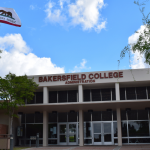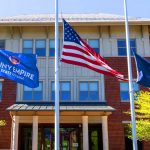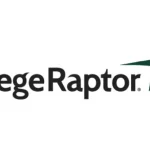Note: In part 1 of this 3 part blog series, we will cover the programs that were shared during our recent NASFAA session on access and equity. In part 2, we will cover specific resources and state-wide initiatives. In part 3, we will cover specific technologies that were shared.
“Education is the most important door that will ever open.” – President Lyndon B. Johnson, in signing the Higher Education Act of 1965
“There’s a saying, ‘People won’t care how much you know until they know how much you care.” – Nedra Robinson, Teacher, Education Week
“Small actions will prove to be incredibly important in building and sustaining relationships with your students.” – Tamera Musiowsky, Teacher, Education Week
As part of the recent 2021 National Student Financial Aid Administrators (NASFAA) Virtual Conference, held June 21-25, financial aid leaders from three different types of higher ed institutions shared best practices around specific financial aid programs and technology that support access and equity across all underserved student populations.
This session, attended by over 2,000 financial aid professionals, was particularly timely given the budgetary and financial pressures colleges face, coming out of the pandemic. College administrators are keen to learn from other financial aid leaders about best practices and initiatives that are making a positive impact toward access and equity goals.
Two key questions were posed at the start of the session as a way to kick off the discussion, with an eye toward providing attendees with specific insights into how they might tackle the access and equity challenges at their institutions:
“How can an institution provide enough proactive support to ensure each student is set up for success?”
“How can the financial aid office be a part of the solution in an ever-resource constrained world?”
Session presentations were made by: Chandra Gonzalez, Assistant Director in the Office of Scholarships and Financial Aid at the University of Houston, a large 4-year public university with over 38,000 undergraduates; Anthony Morrone, Director of Financial Aid at Nevada State College,a public college with roughly 5,000 students; and Kristin Milligan, Director of Financial Aid at College of the Desert, a public community college with roughly 10,000 students.
Highlights included:
At Nevada State College, a Hispanic-Serving Institution (HSI) where 47% of students receive a Pell Grant and its student body closely reflects the broader Las Vegas population, several initiatives and partnerships were shared:
TRIO Student Support Services
The TRIO program supports US citizens and eligible non-citizens. The program targets support for students who are low income, first generation, or have a disability. TRIO provides academic and student success programming and federal grants. At NSC, students who participate have an 86% persistence rate and 93% have a good academic standing rate.
Scholarship Partnerships
Nevada State College has several scholarship partnerships, including: The Dream US, 100 Black Men of Las Vegas, and the Latin and Urban Chambers of Commerce.
State-wide Initiatives
Nevada State College participates in a number of state-wide initiatives, including: 2020 Southern Nevada Diversity Summit and Foster Youth and Native American fee waivers. For a state scholarship and grant, citizenship requirements have been removed. A state aid application is currently being developed by the State of Nevada.
At the University of Houston, which is both a Hispanic-Serving Institution (HSI) and Asian American and Native American Pacific Islander-Serving Institution where 40% of students receive a Pell Grant, several state and institutional initiatives were shared, including support from the UH Foundation and UH Advancement:
Texas Application for State Financial Aid
Texas provides an electronic application. The program covers half of tuition and fees per semester. There is also an in-state tuition waiver.
State-based programs
Good Neighbor Scholarship Program provides tuition waivers for students from countries within the Western Hemisphere. There is also a Border Nation Waiver for Mexican citizens who need financial assistance .
Diversity and Inclusion Enrollment Services Committee
The Committee develops training for Enrollment Services staff. There is also Diversity and Inclusion training for Search Committee members.
At College of the Desert, a Hispanic-Serving Institution (HSI) serving the Coachella Valley of Riverside County in California where 61% of students receive a Pell Grant, several state and institutional programs and resources were shared:
California has a number of programs that are intended to promote access and equity across all student populations. Some of the key ones that were shared include: College Promise Grant (tuition waiver), Cal Grant, Student Success Completion Grant, and the Chafee Grant (foster youth).
College of the Desert also shared that the college has both an Equity Committee and a Student Equity Plan. Diversity is prized on campus and celebrated throughout the year.
In Part 3, we will cover the specific technologies that were shared that drive access and equity at these three institutions.















